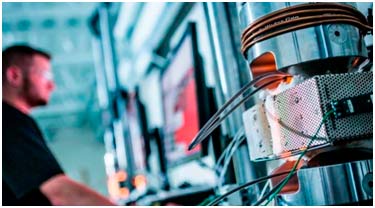Protection against corrosion
-
elaboration as well as technical specifications, technological rules and other normative and technical documentation for industrial production and application of insulated pipes;
-
performance of works for certification tests of factory three-layer PE coated pipes;
-
cumulative tests for compliance with the technical requirements for factory two-layer polyethylene pipe coatings;
- conduction of comprehensive tests of different types of polyurethane coatings and epoxy-urethane coatings to determine the possibility of their use as outer protective coatings of fittings and valves of pipelines applied at the factory and along the route;
-
working out measures for anticorrosion protection of port facilities;
-
working out instructions on controlling the state of the main oil pipelines by cathodic polarization method;
-
examining and preparing conclusions on the corrosive state of the oil pipeline transportation facilities;
-
working out recommendations on improvement of electrochemical protective equipment;
-
providing expert and consulting services in the area of designing and construction of industrial facilities;
-
working out normative and engineering documentation in the area of designing, constructing and running industrial facilities:
-
standards (national, industry, organization);
-
industry regulations (IR);
-
technical regulations (TR);
-
guiding documents (GD);
-
common technical requirements (CTR);
-
Special requirements (SR);
-
Special technical requirements (STR);
-
Technological charts (TC);
-
Procedures, test programs (PTP);
-
Technical specifications (TS).
-
-
Issues relating to corrosion protection;
-

Developing technological schemes, performing engineering calculations, mathematical modeling, including:
-
developing and justifying options for laying the oil pipeline, calculating the parameters of its modes of operation;
-
determining the optimal pipeline characteristics for a given capacity;
-
hydraulic analyses of stationary and nonstationary regimes of oil pipeline operation;
-
thermal-hydraulic analysis of non-isothermal oil pipelines (including taking into account the rheology of the pumped oil);
- thermal-hydraulic analysis of non-isothermal oil pipelines (including taking into account the rheology of the pumped oil);
-
thermal-hydraulic analysis of non-isothermal oil pipelines (including taking into account the rheology of the pumped oil);
-

.svg)